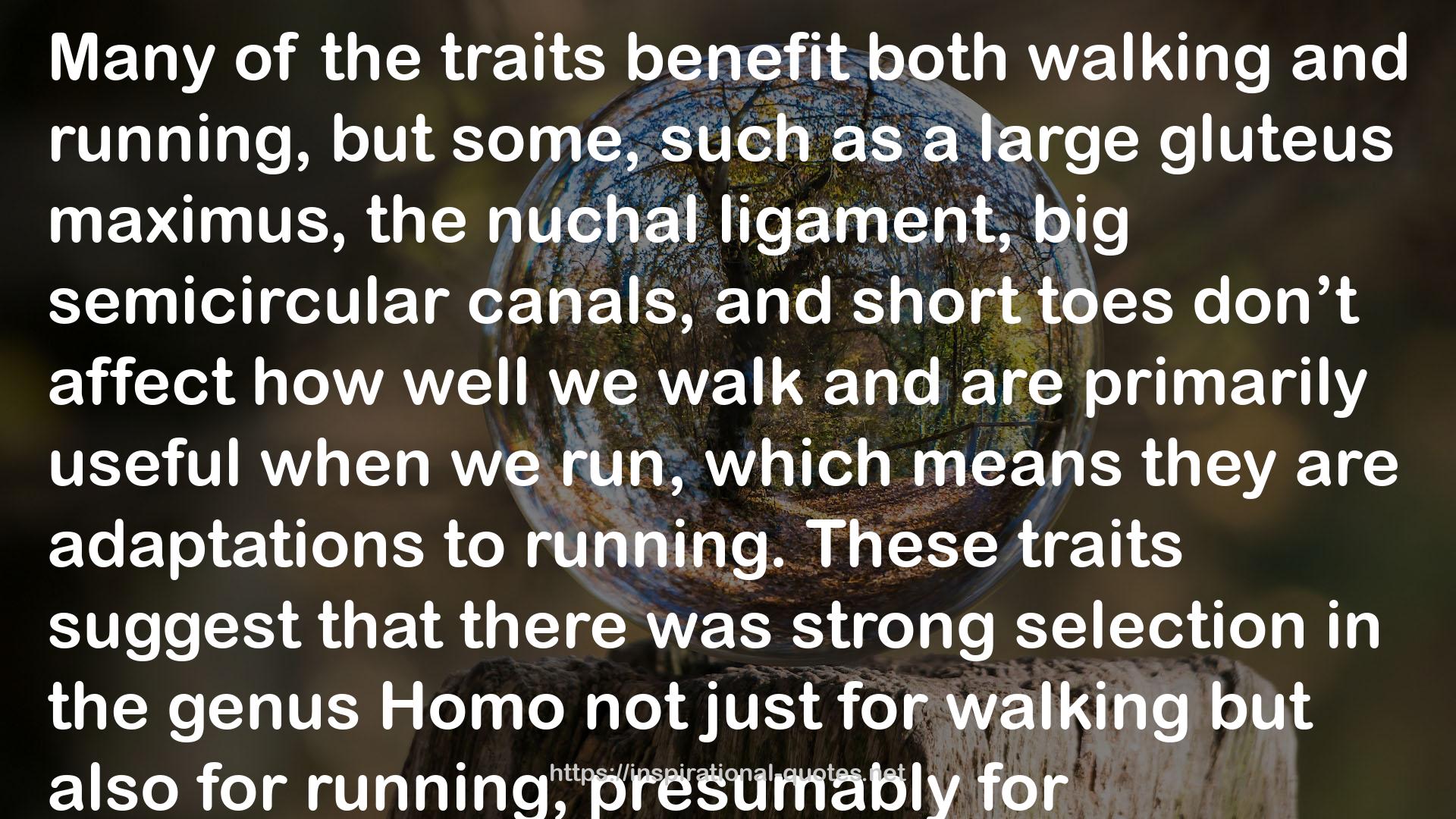" Many of the traits benefit both walking and running, but some, such as a large gluteus maximus, the nuchal ligament, big semicircular canals, and short toes don’t affect how well we walk and are primarily useful when we run, which means they are adaptations to running. These traits suggest that there was strong selection in the genus Homo not just for walking but also for running, presumably for scavenging and hunting. Consider also that a few of these adaptations, especially long legs and short toes, compromise our ability to climb trees. Selection for running may have caused the human genus to become the first primates that are clumsy in trees. In short, the benefits of acquiring meat through scavenging and hunting account for many transformations of the human body first evident in early Homo that enabled early hunter-gatherers not only to walk but also to run long distances. Whether "
― Daniel E. Lieberman , The Story of the Human Body: Evolution, Health, and Disease
